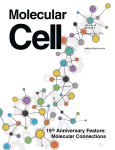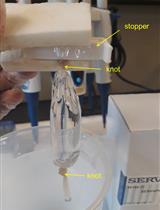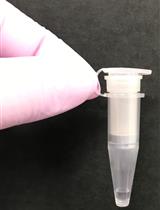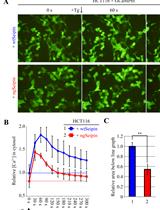- EN - English
- CN - 中文
A Protocol for Measurement of Intracellular pH
细胞内的pH值测量法
发布: 2014年01月20日第4卷第2期 DOI: 10.21769/BioProtoc.1027 浏览次数: 22781
Abstract
Intracellular pH (pHi) is an important physiological determinant of enzyme activity and cellular function (Kurkdjian and Guern, 1989). All proteins depend on a tightly regulated pH to maintain their structure and function. Protonation–deprotonation events can dictate the charge of biological surfaces and are integral steps in many metabolic reactions (Casey et al., 2010). Moreover, the proton gradient across the mitochondrial membrane is used to generate cellular energy and support other mitochondrial processes. As a result, cells have developed multiple mechanisms to maintain a narrow range of pHi in response to extra- and intracellular fluctuations in pH (Orij et al., 2012). Here, we describe a protocol for pHi measurement in live cells that uses fluorescent microscopy and the pH sensitive dye 2’,7’-Bis-(2-Carboxyethyl)-5-(and-6-)-Carboxyfluorescein Acetoxymethyl Ester (BCECF-AM). This method was recently used to determine the effects of intracellular pH changes on global histone acetylation levels (McBrian et al., 2013).
Materials and Reagents
- Hela cells
- Nigericin (Sigma-Aldrich, catalog number: N7143 )
Prepare 10 mM nigericin (1:10,000 ) stock in ethanol (store aliquots at -20 °C and keep on ice during experiment) - DMSO (Sigma-Aldrich, catalog number: D2650 )
- BCECF-AM (Life Technologies, catalog number: B1170 )
- Glucose
- 1% Antibiotic-Antimycotic (Gibco®, catalog number: 15240 )
- DMEM (Mediatech, Cellgro®, catalog number: 10-013-CV )
- 10% FBS
- Paraffin wax
- Calibration solution (see Recipes)
- 10x Earle’s balanced salt solution (EBSS) stock without glucose and without sodium bicarbonate (see Recipes)
- Loading solution (see Recipes)
- Cell culture medium (see Recipes)
Equipment
- Perfusion inserts for 35 mm Dishes (Warner Instruments, catalog number: RC-33DM )
- 35 mm poly-lysine coated glass bottom culture dishes (MatTek, catalog number: P35GC-1.0-14-C )
- 50 ml conical tube
- Needles
- Aluminum foil
- Axiovert 200 M Zeiss florescent microscope equipped with a high-resolution video camera (ZEISS, Axio CAM MRm)
- BCECF filter set (Chroma Technology Corporation, catalog number: 71001a )
- Neutralize density filter (ND 1.0 A - 10.0% transmission-25mm; this is custom-designed for a given microscope) (Chroma Technology Corporation)
- Tubing and connections for perfusion
- Flow pump (Rainin Peristaltic pump Dynamax RP-1. 4-channel; catalog number is different based on supplier)
- 5% CO2 tank
- 37 °C Water bath
- 5% CO2 incubator (make sure it is calibrated regularly; variations in CO2 concentration can have dramatic effects on pH, generating noise in the experiment)
Software
- AxioVision 4.8
- Slidebook 4.2
- SigmaPlot
- Excel or any spreadsheet analysis software
Procedure
文章信息
版权信息
© 2014 The Authors; exclusive licensee Bio-protocol LLC.
如何引用
Behbahan, I. S., McBrian, M. A. and Kurdistani, S. K. (2014). A Protocol for Measurement of Intracellular pH. Bio-protocol 4(2): e1027. DOI: 10.21769/BioProtoc.1027.
分类
生物化学 > 其它化合物 > 离子
细胞生物学 > 基于细胞的分析方法 > 离子分析
您对这篇实验方法有问题吗?
在此处发布您的问题,我们将邀请本文作者来回答。同时,我们会将您的问题发布到Bio-protocol Exchange,以便寻求社区成员的帮助。
提问指南
+ 问题描述
写下详细的问题描述,包括所有有助于他人回答您问题的信息(例如实验过程、条件和相关图像等)。
Share
Bluesky
X
Copy link















